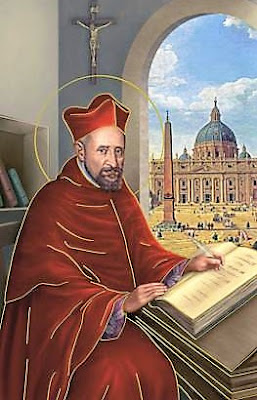 |
| St Teresa of Calcutta (27 August 1910 - 5 September 1997) |
Mother Teresa of Calcutta, the tiny woman recognized throughout the world for her work among the poorest of the poor, was canonized on September 4, 2016. Among those present were hundreds of Missionaries of Charity, the order she founded in 1950 as a diocesan religious community. Today the congregation also includes over 4,500 contemplative sisters and brothers and an order of priests.
Born on August 27, 1919 to Albanian parents in what is now Skopje, Macedonia (then part of the Ottoman Empire), Agnes Gonxha Bojaxhiu was the youngest of the three children who survived. For a time, the family lived comfortably, and her father's construction business thrived. But life changed overnight following his unexpected death.
During her years in public school, Agnes participated in a Catholic sodality and showed a strong interest in the foreign missions. At age 18 she entered the Loreto Sisters of Dublin, Ireland. It was 1928 when she said goodbye to her mother for the final time and made her way to a new land and a new life. The following year she was sent to the Loreto novitiate in Darjeeling, India. There she chose the name Teresa and prepared for a life of service. She was assigned to a high school for girls in Calcutta, where she taught history and geography to the daughters of the wealthy. But she could not escape the realities around her—the poverty, the suffering, the overwhelming numbers of destitute people.
In 1946, while riding a train to Darjeeling to make a retreat, Sister Teresa heard what she later explained as “a call within a call. The message was clear. I was to leave the convent and help the poor while living among them.” She also heard a call to give up her life with the Sisters of Loreto and, instead, to “follow Christ into the slums to serve him among the poorest of the poor.”
After receiving permission to leave Loreto, establish a new religious community and undertake her new work, she took a nursing course for several months. She returned to Calcutta, where she lived in the slums and opened a school for poor children. Dressed in a white sari and sandals (the ordinary dress of an Indian woman) she soon began getting to know her neighbors—especially the poor and sick—and getting to know their needs through visits.
The work was exhausting, but she was not alone for long. Volunteers who came to join her in the work, some of them former students, became the core of the Missionaries of Charity. Others helped by donating food, clothing, supplies, the use of buildings. In 1952 the city of Calcutta gave Mother Teresa a former hostel, which became a home for the dying and the destitute. As the order expanded, services were also offered to orphans, abandoned children, alcoholics, the aging, and street people.
For the next four decades, Mother Teresa worked tirelessly on behalf of the poor. Her love knew no bounds. Nor did her energy, as she crisscrossed the globe pleading for support and inviting others to see the face of Jesus in the poorest of the poor. In 1979 she was awarded the Nobel Peace Prize. On September 5, 1997, God called her home.











































